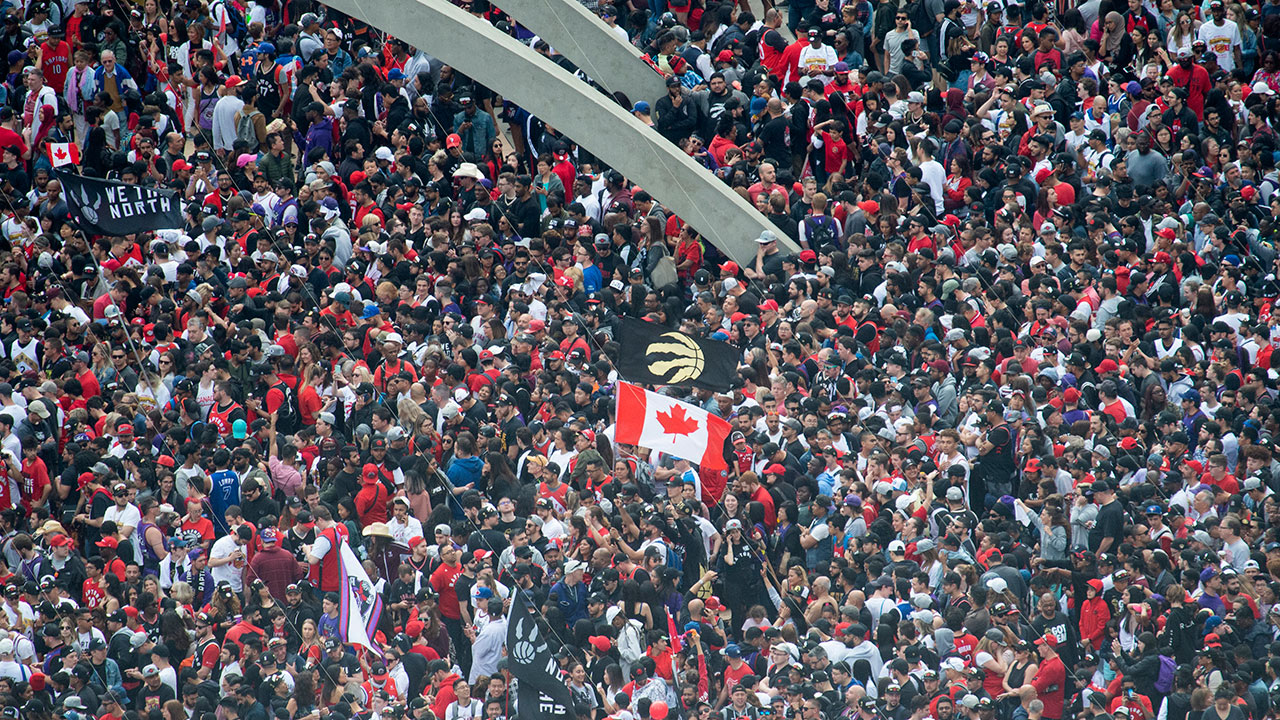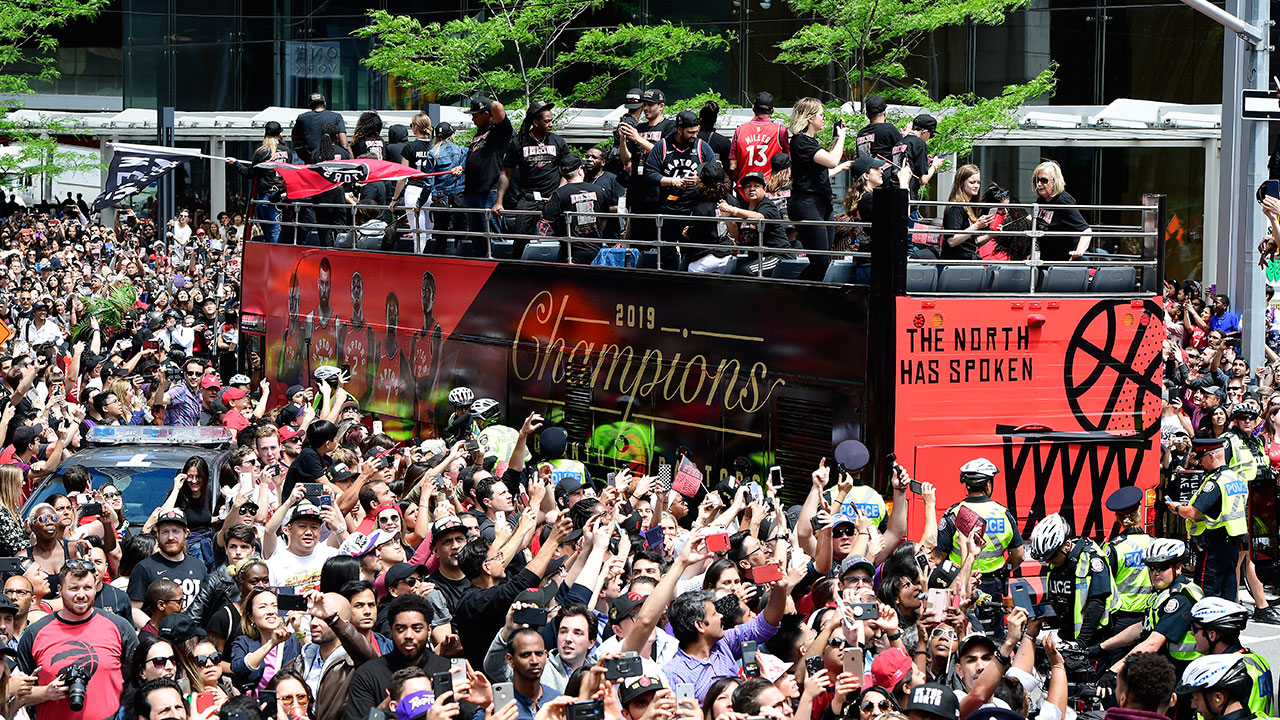Dr. Andrew Morris describes himself in professional correspondence as ‘a basketball coach and sometime infectious disease specialist.’
In addition to pick-and-roll coverage he knows viruses and public health. It’s the latter part of his title that pays the bills — his position on the bench with the North Toronto under-13 girls team is strictly a passion.
So with that out front I can pass on that last June he quit work early at Mount Sinai Hospital in downtown Toronto — he got his patient rounds in first, he stresses — so he and his basketball-playing daughter could squeeze in along University Avenue with a few million friends and watch the Raptors’ championship parade.
For most of us, it was a more innocent time, when we only worried about the potential for a physical disaster with millions of people crowded into a tight space on a hot day, not the possibility of a deadly virus fanning out and changing day-to-day life as we know it.
But Morris — who, along with being a dad and a basketball fan, is the medical director of the Antimicrobial Stewardship Program at the Sinai Health System and a Harvard-trained epidemiologist — has made a career out of studying how infections spread and still felt compelled to get in position to be sprayed with bubbly by Marc Gasol.
“It was a once-in-a-lifetime moment,” he says.
And better yet?
He thinks he’d do it again. In time. If the NBA resumes play this year in some shape or form (the convention floor of a Las Vegas casino?) and if the post-Kawhi, Kyle Lowry-led group could defend their title, Morris might skip a parade this time around.
The public safety expert in him doubts there would be one.

But longer term? He’s optimistic that physical distancing won’t signal the end of sports as we know them, that the days of crowding shoulder-to-shoulder with thousands of total strangers and high-fiving and hugging in celebration aren’t gone forever.
“I think that once we have gone back to a sort of regular seasonal disease [pattern] and this has gone from us, I will feel reasonably comfortable being in crowded places,” he said while taking a break from modelling demands for PPE requirements for frontline workers and other things more important than sports right now.
“It’s all about relative risk. … What will happen at some point in time — we don’t know when that is — but at some point in time, when we’re fairly comfortable that we have things under control, there will be a decision made whether or not the benefits of keeping the country in lockdown are outweighed by the risks and detriments.
“…It’s a complex kind of mathematical process we call decision analysis, but I kind of do it in my head and I say: ‘You know what, yeah there are infectious diseases always circulating around. There are ones that we pass on to each other when I play basketball.’ … But I say, ‘You know, I like playing so much. I’ll take that risk, knowing that, OK, I’ll wash my hands and when I go home I’ll go and shower immediately.’ There are ways that I mitigate that risk.
“The risk isn’t zero but it’s not like if I went to a crowd now — the risk of getting exposed to coronavirus in a crowd now is huge. But the risk of a life-threatening, majorly communicable infectious disease being acquired two years from now? You know, it’s pretty low.”
I was thinking about crowds and parades the other day because for the past 24 nights — ending Sunday night — the Toronto Raptors championship run was re-aired game-by-game like everyone’s favourite binge watch, except we all know the ending, so no need to be concerned about spoilers.
In fact, spoilers were almost the point.
Remembering that Lowry went scoreless in Game 1 against Orlando and suddenly had the weight of five previous years of playoff ebbs and flows to answer for, while knowing that two months later (22 nights in COVID Time) he opened Game 6 against of the NBA Finals with 11 straight points and 15 in the first quarter. Knowing how it ended only made the beginning and the middle — what would have happened if Leonard hadn’t gone off in Game 4 against Philly? — more fun to contemplate.
But with the championship re-run over, it’s time to celebrate. In real time the parade took place Monday, June 17, two days after the Raptors took possession of the Larry O’Brien Trophy in Oakland, and had spent 48 hours on a completely different kind of binge.
It feels safe now to say we’ll never see anything like that parade again — and not because of COVID-19 or the possibility of any future pandemic.

It was a celebration 25 years in the making, an outlet for a city and a country that has been transformed in the space of two decades and was looking for a place to meet.
The Raptors provided it over the course of two months. The parade was a culmination.
Re-watching the Raptors’ run is a reminder that it was a moment that will justifiably remain frozen in time.
First, because the chances of winning a title are so slim — even with Leonard and Danny Green in the lineup the Raptors spent most of the run dancing on the head of a pin. The margin for error for all but the truest dynasties is razor thin. And second, because it’s hard to imagine the next celebration matching the intensity of the original.
But also because it’s hard not to wonder if our relationship with crowds might be changed even after COVID-19 passes.
It was the shared experiences, the closeness that made the championship run so special, when being together was about community, rather than being communicable.
Morris gets it. He didn’t watch the Raptors championship re-run because he’s been too busy helping manage a crisis, but his family did, and he was on the edge of his seat last May and June like everyone else.
These days the basketball nerd in him misses watching the games and picking up the nuances of Raptors head coach Nick Nurse’s defensive adjustments and how Toronto can tailor coverages for different players in different situations.
If not for COVID-19, he’d be trying to apply some of his learning to his girls’ team, who were scheduled to be playing for a provincial championship this weekend.
And like any other fan, he’s looking forward to being in the arena again, and feeling the building come alive.
He would like to see some changes though.
[relatedlinks]
“I understand the economics … increasing the space between the seats is a tough way to run a sports business,” he said. “But I think things like making hand hygiene really easy and habitual would actually go a long way,
“If I’m ever at a game with my daughter, I’ll say, ‘Watch: this person is putting their hands on the handrail and he may have picked his nose or whatever, and every other person has put their hand on the handrail … and now they’re going to go get food, and then they’re going to put that food in their mouth with their hand and they’re basically putting in their mouth everything that every other person in the building has touched.’”
Yup. Super gross.
But like holding on to the possibility of stumbling on to a batch of Lysol Wipes at Costco, there’s always hope:
“So, the way to of course mitigate that in arenas is to clean the handrails religiously and coat them with antimicrobial coating,” Morris says. “And you can also say, ‘You can’t be in line for food unless you’ve used hand sanitizer and then when you leave the building, you’re also going to use sanitizer, which is what we’re doing in the hospital now.
“Those are things that are pretty easy to do, that will reduce the spread of infectious diseases, because we know that hands are just such a potent vehicle for transmitting infection.”
It’s impossible to live a germ-free future — “There are new organisms going around all the time but because we don’t monitor them, people don’t really have an appreciation of the impact on society, I’ll be honest with you” — but there is the possibility that we can navigate crowds safely and confidently again.
It just might mean a new normal, just like airport and arena security standards changed forever after 9/11, hygiene standards at sports events will likely be different in a post-COVID world.
Let’s hope. Everyone loves a parade.









